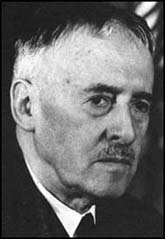Video - http://youtube.com/watch?v=gdopBrDrPcQ
In the winter and spring of 1943, after their terrible defeat in Stalingrad, clearly outnumbered and losing the initiative in the eastern front, Hitler and the German High Command were asking themselves what to do next, in the summer of 1943.
The situation was bad not only on the war front.
While Russian tank production increased to unbelievable levels, the German obsession for complex new super weapons, like the advanced but then immature Panther and Tiger tanks, largely reduced German tank production.
General Guderian, the best German armor expert and commander, said:
As interesting as these designs were, the practical result was just a reduced production of the Panzer 4, our only efficient tank then, to a very modest level...
http://greyfalcon.us/The%20Battle%20Of%20Kursk.htm


The Battle of Kursk Bulge started on July 5th 1943. It took the Nazis the first few battles to feel the strength of the Soviet defenses. In the large-scale campaign in which four million soldiers took part and which lasted seven weeks the crucial time fell on July 12th, the day of the biggest in history tank battle, which occurred near Prokhorovka village in the Belgorod Region. Armoured Forces Marshal Pavel Rotmistrov, who commanded one of the tank armies, recalled.
“In the morning of July 12th I and a group of officers were at an observation point, from which the battlefield could be seen very clearly. In the first minutes of the battle two avalanches of tanks surged onto one another in clouds of dust and smoke. 1500 tanks on either side were in action simultaneously and the field near Prokhorovka proved too small for such a force. Locked into one huge tangle the tanks rolled into one enormous mass. Hundreds of tanks and self-propelled guns were on fire. The rumble from rattling armour and the howl of shells many of which ricocheted sideways as they hit the armour was deafening! Soldiers jumped out of burning tanks and rolled on the ground to put out flames.”
Hitler’s command pinned most of their hopes on the new “Tiger” and “Panther” tanks and the “Ferdinand” self-propelled gun. However, the Soviet tanks, which boasted a higher degree of maneuverability, knocked out the armoured Nazi monsters with utmost efficiency. The battle ended with a total defeat of the Nazi tank force, which was turned into a scrap of metal. After the Battle of Prokhorovka the Soviet troops went on the offensive and liberated Oryol and Belgorod.
The defeat of the Nazis near Kursk left Germany unable to recover from the losses. The German historian Goertliz wrote that the Battle of Kursk marked the beginning of a deadly crisis in the Nazi army.
On the occasion of the victory on the Kursk Bulge on August 5th 1943 Moscow for the first time saluted to Soviet troops. And that was quite justified, for winning the Battle of Kursk meant winning the war. The victory in the Battle of Kursk had far-reaching consequences – it brought forth the collapse of the Nazi bloc, which included a number of European countries, and led to the expansion of anti-fascist and national liberation movement in Europe.
http://www.vor.ru/English/homeland/home_041.html

The Battle of Kursk (Russian: Курская битва) or Kursk Campaign (July 4 – July 20, 1943), also called Operation Citadel (German: Unternehmen Zitadelle) by the German Army, was a major battle on the Eastern Front of World War II and the last German blitzkrieg offensive in the east as well as the last German offensive of such scale in the war.
The exact definition of the battle varies: the Germans saw it as comprising Operation Citadel only, while the Soviets considered (and Russians today consider) it to include Citadel and the subsequent Soviet counteroffensives, Operation Kutuzov and Operation Polkovodets Rumyantsev. Overall, the campaign, which included the famous sub-battle at Prokhorovka, remains both the largest armored engagement and the most costly single day of aerial warfare to date.
Kursk is further notable for the deliberately defensive battle strategy on the Soviets' part. Having good intelligence on Hitler's intentions, the Soviets established and managed to conceal elaborate layered defense works, mine fields, and stage and disguise large reserve forces poised for a tactical and strategic counterattack typical of defensive battle plans. Though the Germans planned and initiated an offensive strike, the well-planned defense not only frustrated their ambitions, but also enabled the Soviets to follow up with counteroffensives and exhausted the German abilities in the theater, thereby seizing the initiative for the remainder of the war. In that sense it may be seen as the second phase of the turning point that began with the German defeat at the Battle of Stalingrad, whose aftermath set the scene by establishing the Kursk Salient (also known as the "Kursk Bulge"), the reduction of which was the objective of the German armies entering in July. The subsequent counterattacks retook Orel and Belgorod on August 5, and Kharkov on August 23, pushing back the Germans across a broad front. This was the first successful major Soviet summer offensive of the war.
http://en.wikipedia.org/wiki/Battle_of_Kursk
__________________________________

"History knows no greater display of courage than that shown by the people of Soviet Russia." - Henry L. Stimson US Secretary Of War
http://en.wikipedia.org/wiki/Henry_Stimson